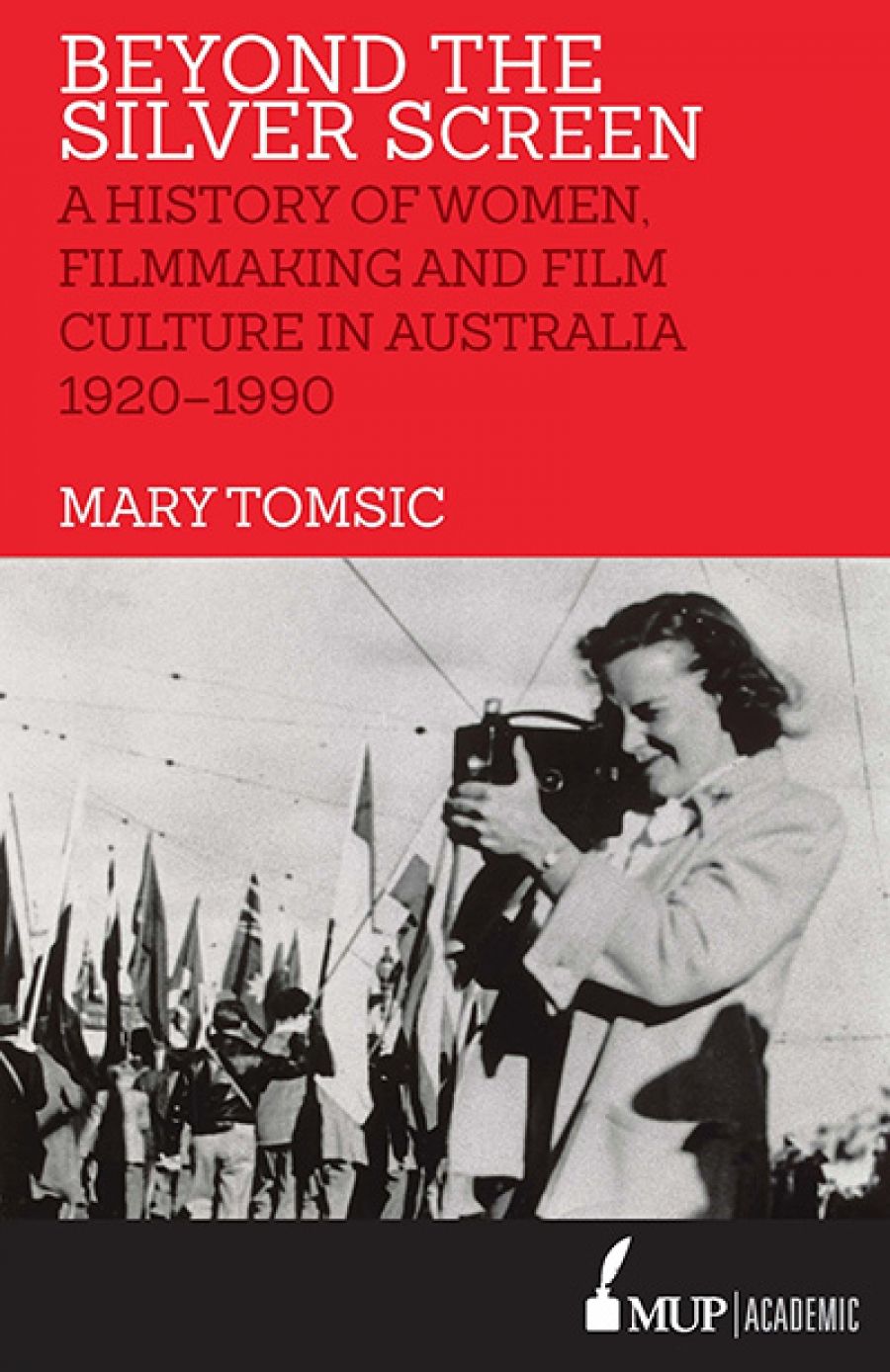
- Free Article: No
- Contents Category: Film
- Custom Article Title: Suzy Freeman-Greene review 'Beyond the Silver Screen: A history of women, filmmaking and film culture in Australia 1920–1990' by Mary Tomsic
- Custom Highlight Text:
In 1971, Australian filmmaker Joan Long wrote the script for a film about gentrification in the Sydney suburb of Paddington. At a screening in London, it was introduced by director Peter Weir. When asked who the scriptwriter was, Weir replied that she was a housewife, according to a friend of Long’s ...
- Book 1 Title: Beyond the Silver Screen
- Book 1 Subtitle: A history of women, filmmaking and film culture in Australia 1920–1990
- Book 1 Biblio: Melbourne University Publishing, $49.99 pb, 261 pp, 9780522871227
In Australian film circles, no claims of Weinstein-like behaviour have so far emerged. Still, in late 2016 our Oscars equivalent, the AACTA awards, was crashed by women in sausage costumes condemning ‘the sausage party’ that is the local film industry. Screen Australia research released in 2015 showed that just thirty per cent of producers, twenty-one per cent of writers, and sixteen per cent of directors working on Australian feature films from 1970 to 2014 were women. In response, it mounted a $5 million plan to address this gender imbalance. Last year, it announced that forty-seven per cent of screen productions it had funded in the past two years were led by women. Still, men dominated nominations for the 2017 AACTA awards in areas such as directing, cinematography, and editing.
Tomsic’s book, though threaded with tales of discrimination, is an attempt to reclaim women’s hidden film history. During the 1920s, women were prominent in Australian cinema. Lottie Lyell, our ‘first film star’, co-directed The Blue Mountains Mystery (1921). The actor Louise Lovely ‘got the picture bug’, went to work in Hollywood, and returned to co-direct Jewelled Nights (1925). The McDonagh sisters – Isobel, Phyllis, and Paulette – made numerous feature films. By the early 1930s this activity had largely fizzled out. Tomsic writes that Armstrong’s film My Brilliant Career (1979) was ‘the first mainstream Australian feature film’ to be directed by an Australian woman since Paulette McDonagh’s Two Minute’s Silence in 1933.
What happened during those forty-six years? Tomsic, a historian, argues that women were continually involved in a variety of ways. All too often, though, they were undervalued and patronised by men. Media coverage invariably emphasised a woman’s gender and physical attributes rather than her skills. When the American filmmaker Winifred Walker came here in the 1950s, a newspaper headline read: ‘Woman Arrives to Make Colour Film on Australia’.
Over in the Commonwealth government’s film unit, women such as Catherine Duncan, Jennie Boddington, and Long worked on nation-building documentaries. But chances to shine were limited. In the 1950s, one woman was told she couldn’t work as a ‘camera-man’ as she lacked the strength to carry equipment. Boddington recalled that women couldn’t go on location because it was feared they might have affairs with men. They could only be ‘assistants’ and, as Long put it, were given the ‘fag end’ jobs. Yet they plugged away, working on films about topics such as immigration, Australian universities, and Sydney Harbour.
 Lottie Lyell in The Church and the Woman (1917)
Lottie Lyell in The Church and the Woman (1917)
Tomsic casts her net widely to show other ways in which women contributed to film culture. Some advocated for censorship to protect children’s moral development. Others later campaigned against censorship as members of suburban film societies. Tomsic looks at the women who made films for activist organisations such as the Grail Film Group (part of an international youth movement for Catholic girls) and the Waterside Workers’ Federation Film Unit (which employed three filmmakers in the 1950s). She describes how women had to sacrifice creative goals for motherhood and examines the surge in feminist cinema in the 1970s. Two crucial factors that led to more women becoming filmmakers were the development of film schools and an increase in female producers wanting to tell women’s stories.
 Gillian Armstrong (photograph by Eva Rinaldi, Wikimedia Commons)Unfortunately, this book reads like a long article in an academic journal, with constant foregrounding of what the author is about to say and repetitious summing up. While I appreciate Tomsic’s commitment to unearthing women’s hidden contributions, some of them are pretty minor. She is, it seems, opposed to perpetuating ‘a Hollywood ideology, valuing one type of film-making over others’. But starting a film club in Croydon or making a doco about a Eucharistic Congress in Newcastle is hardly on a par with writing or directing your own film for a mainstream audience. The latter brings creative and financial rewards, and a fair bit of influence.
Gillian Armstrong (photograph by Eva Rinaldi, Wikimedia Commons)Unfortunately, this book reads like a long article in an academic journal, with constant foregrounding of what the author is about to say and repetitious summing up. While I appreciate Tomsic’s commitment to unearthing women’s hidden contributions, some of them are pretty minor. She is, it seems, opposed to perpetuating ‘a Hollywood ideology, valuing one type of film-making over others’. But starting a film club in Croydon or making a doco about a Eucharistic Congress in Newcastle is hardly on a par with writing or directing your own film for a mainstream audience. The latter brings creative and financial rewards, and a fair bit of influence.
Perhaps the most useful lessons taken from Beyond the Silver Screen were about the importance of affordable tertiary education and feminist activism. The opening of a government-funded national film school in 1973 offered more women the chance to study filmmaking, but, according to Armstrong, it took years of lobbying by feminists before the school would admit them equally to men.


Comments powered by CComment